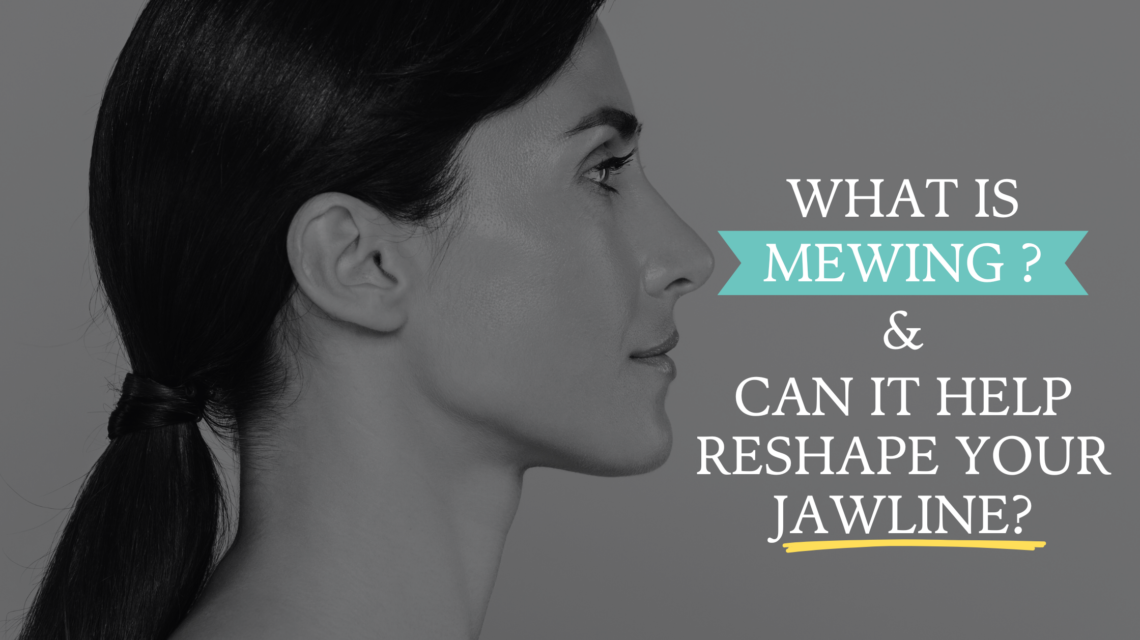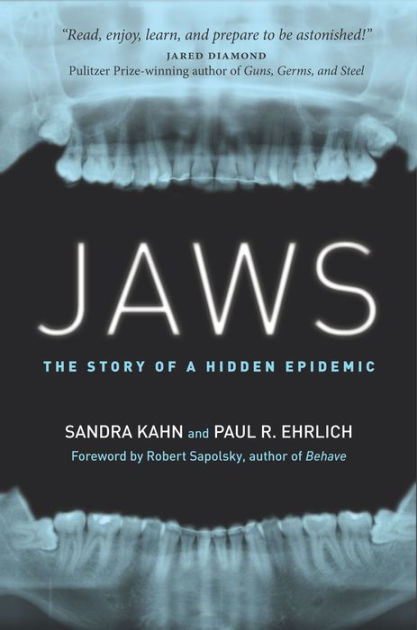What Is Mewing
Mewing has gained popularity as a technique to improve facial structure and jawline definition. Recently, it has become a trendy topic on social media, with many people sharing their experiences and claiming that it helps them achieve a chiseled jawline. But what exactly is mewing, and can it really reshape your jawline? Before trying any new trend, it’s important to do thorough research to understand what you’re getting into, no matter how simple or safe it may seem.
In this blog, we will delve into the concepts of mewing, explore its origins, and discuss the work of Dr. John Mew, the pioneer behind this technique. We will also examine whether mewing is something you should consider trying at home.
Orthotropics and Dr. John Mew
Dr. John Mew, an orthodontist, began exploring oral posture in Germany in the late 1960s. Mew applied the concepts influenced by Wolff’s Law, which states that bones adapt to stresses, and Melvin Moss’s Functional Matrix Theory, which posits that bones grow in response to surrounding soft tissues, to the jawline, facial bones, and teeth. He proposed that altering habits and training facial muscles could reshape the jawline.
In 1981, after decades of research, John Mew published a groundbreaking paper in the British Dental Journal, highlighting the importance of proper tongue posture for a well-defined jaw and aligned teeth. The orthodontic industry initially rejected his findings, as they contradicted traditional reliance on surgery and mechanical devices. However, now, there are increasingly more studies linking the connection between oral posture and its influence on jaw development and malocclusion.
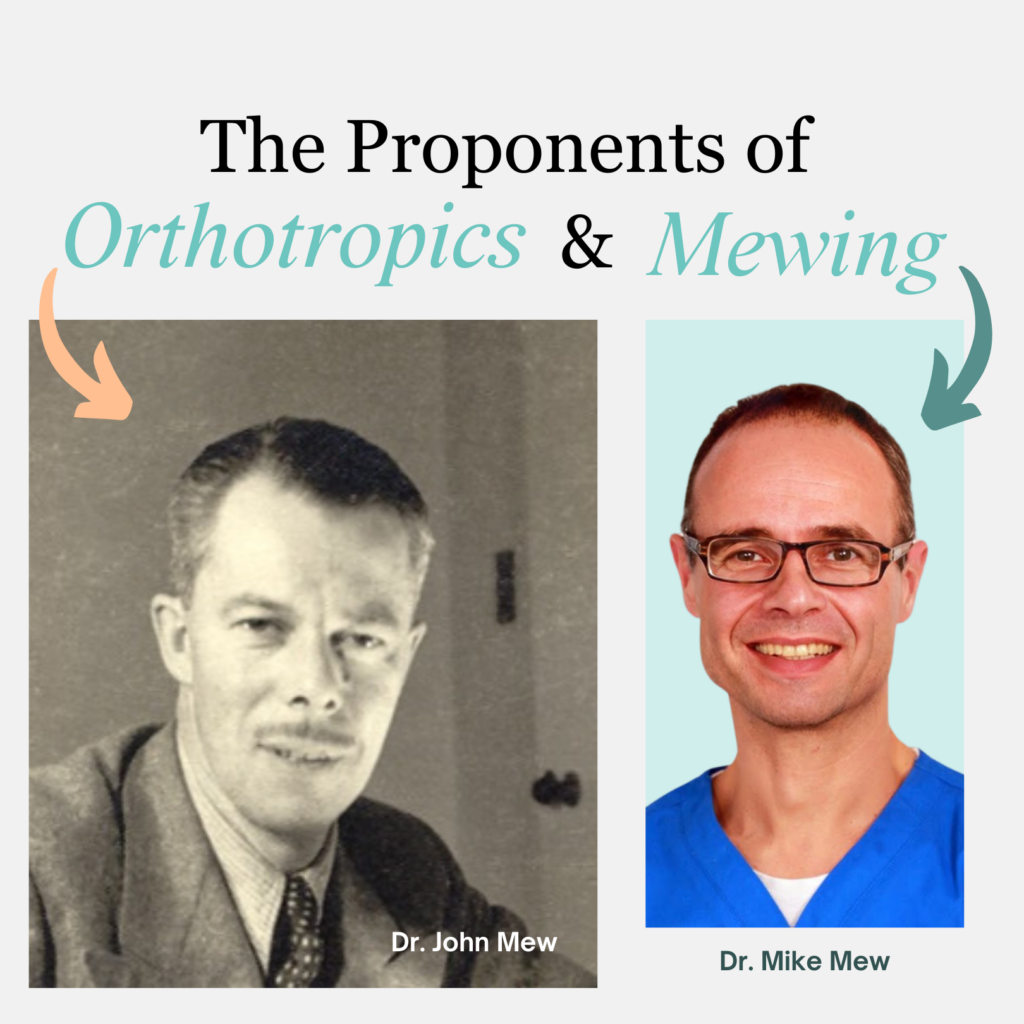
John’s son, Mike Mew, followed in his father’s footsteps, focusing on the interplay between posture, muscle function, and orthodontic issues. As a lecturer and lead clinician at the London School of Facial Orthotropics, Mike continues to advocate for orthotropics and mewing.
Their combined efforts have significantly influenced orthotropics, and their work has been widely published, challenging the traditional use of braces and surgery.
Conventional Orthodontics vs. Orthotropics
Orthotropics is a specialized field of dentistry that addresses teeth and jaw misalignment (malocclusions) by improving oral and head posture.
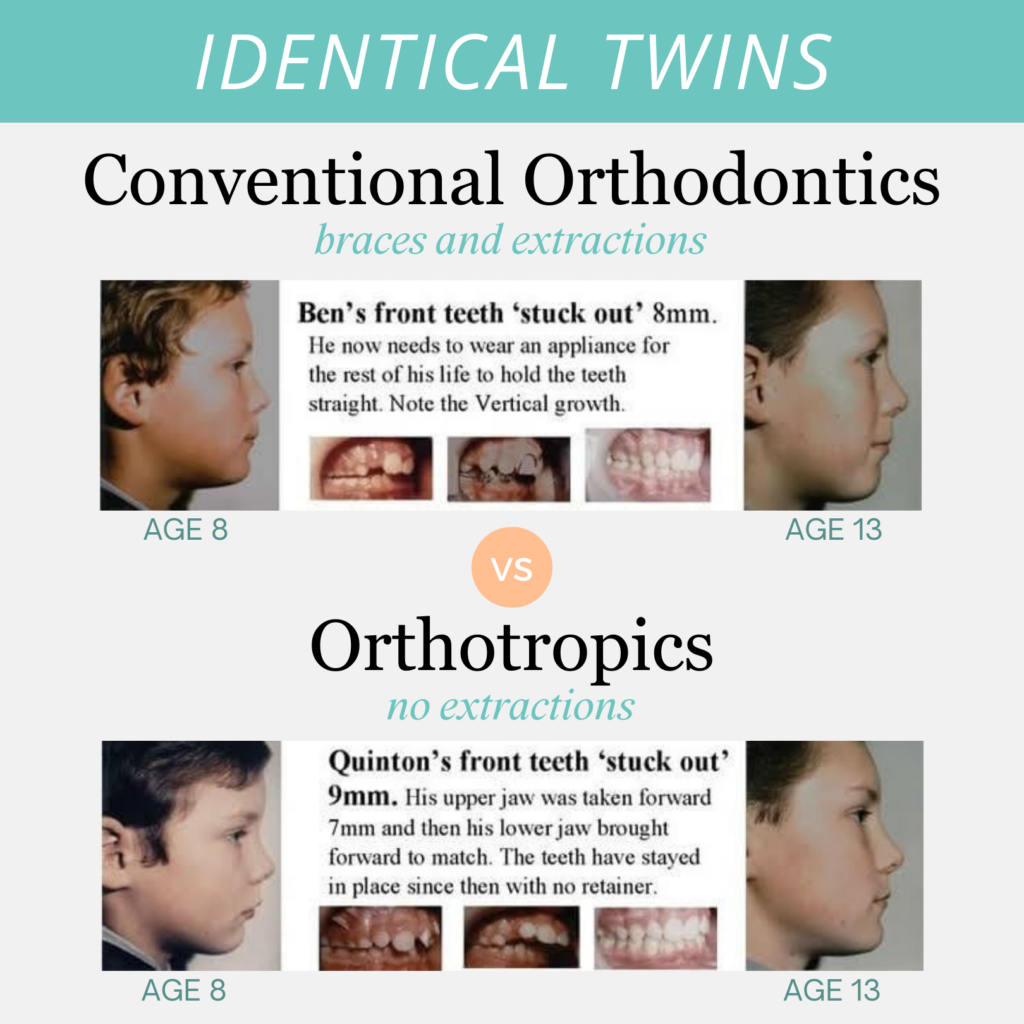
Conventional orthodontics attributes crowded teeth and poor facial development primarily to genetics. In contrast, orthotropics posits that these issues arise from poor facial posture, improper breathing, and an unhealthy diet.
Conventional orthodontic methods focus on straightening teeth to enhance facial appearance, while orthotropics aims to create a well-developed face that naturally results in straight teeth. This philosophical difference leads to distinct treatment approaches.
Orthodontics typically uses fixed appliances like braces to align teeth. Orthotropics, however, employs moveable appliances to promote correct tongue positioning. The idea is that if the tongue rests on the roof of the mouth, it will widen the maxilla (upper jaw), creating space for teeth, encouraging jaw growth, and enhancing facial aesthetics.
Origins: The Birth of Mewing
Dr. Mike Mew, son of Dr. John Mew, developed the concept of mewing as a self-help method for improving facial posture and jawline definition without professional intervention. Simply put, mewing involves maintaining proper tongue posture and strengthening jaw muscles through specific exercises.
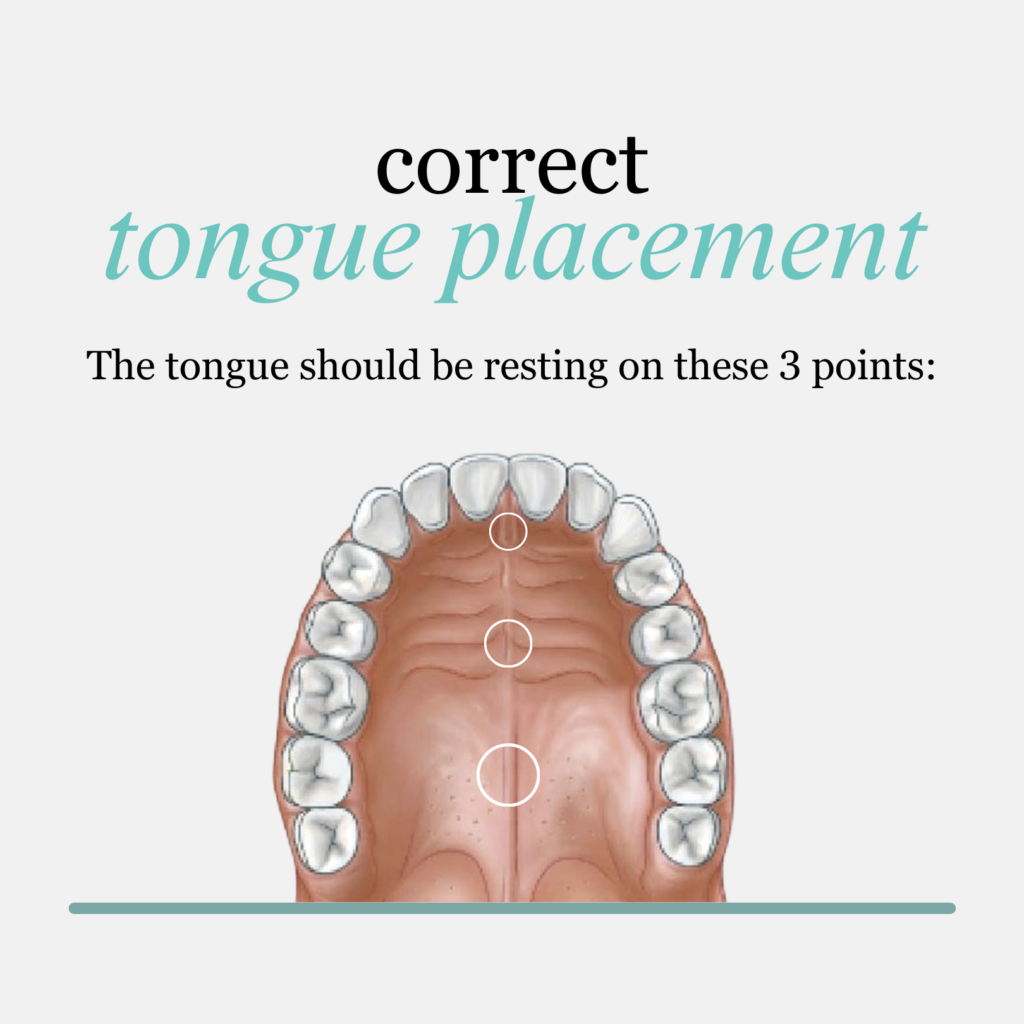
Proper tongue posture consists of the tongue resting against the upper roof of the mouth, just behind the front teeth. See the image below for a visual of where the tongue should be placed.
The Importance of Proper Technique in Mewing
The intention behind mewing is to improve facial and oral posture; however, improper mewing can inadvertently lead to issues such as misaligned bites, TMJ pain, and oral dysfunction.
While mewing seems straightforward, it involves various factors like body posture, potential oral restrictions (e.g., tongue tie), proper nasal breathing, and jaw position. Incorrect practice can lead to pain or dysfunction, potentially causing more harm than good. Because each person has a unique makeup, including occlusion, posture, oral habits, and function, there is no one-size-fits-all solution for correcting oral and facial posture. This is why it’s important to see a myofunctional therapist if you’re interested in mewing to improve your oral posture and sharpen your jawline.
Why Consult a Myofunctional Therapist?
Given the individuality of each person’s needs, working with a myofunctional therapist is crucial. Myofunctional therapy involves exercises designed to improve bite, breathing, and facial and tongue posture for those with orofacial myofunctional disorders (OMDs). These exercises target the soft tissues of the face, neck, and mouth to achieve optimal tongue position and oral rest posture.

Myofunctional therapists are trained to assess and address each individual’s unique function and habits, tailoring exercises to achieve lasting success. Working with a myofunctional therapist can help you reach your specific goals and needs, ensuring safe and effective practice of mewing.
Conclusion: Mewing Is A Promising Method for Improving Facial Posture and Jawline Definition
Mewing offers a promising method for improving facial posture and jawline definition, drawing from the principles of orthotropics. By understanding and practicing proper tongue posture, individuals can potentially enhance their facial structure over time. However, professional guidance from a myofunctional therapist is advised to avoid complications and achieve the best results.
Read More:
References:
https://johnmeworthotropics.co.uk/
https://mewing.coach/blog/mewing-before-and-after
https://www.ncbi.nlm.nih.gov/pmc/articles/PMC7498344/
https://www.scielo.br/j/jaos/a/sYyzHsqsKd6g7jwFGxLtsSr/?format=pdf&lang=en
Recommended Reading
If you are interested in learning more about the science of healthy jaw and facial development and how it affects your optimal health, see below.
Encouraging infants and children to chew is vital for healthy jaw development, as it stimulates muscles, promotes bone growth, and aids in proper swallow patterns. Despite modern food conveniences, prioritizing hard, fibrous foods early on can optimize jaw growth and overall oral health. Additionally, incorporating chew toys and tools like a MyoMunchee will also help stimulate healthy jaw growth and development, as well as help foster healthy oral habits like correct tongue posture and nasal breathing. To dive deeper into this topic, I highly recommend the book “Jaws: The Story of a Hidden Epidemic” by Sandra Kahn and Paul R. Ehrlich.
More About Jaws
There’s a silent epidemic in western civilization, and it is right under our noses. Our jaws are getting smaller and our teeth crooked and crowded, creating not only aesthetic challenges but also difficulties with breathing. Modern orthodontics has persuaded us that braces and oral devices can correct these problems. While teeth can certainly be straightened, what about the underlying causes of this rapid shift in oral evolution and the health risks posed by obstructed airways?
Sandra Kahn and Paul R. Ehrlich, a pioneering orthodontist and a world-renowned evolutionist, respectively, present the biological, dietary, and cultural changes that have driven us toward this major health challenge. They propose simple adjustments that can alleviate this developing crisis, as well as a major alternative to orthodontics that promises more significant long-term relief. Jaws will change your life. Every parent should read this book.
.
Family Dental Centre Home Page: www.familydentalguelph.com


